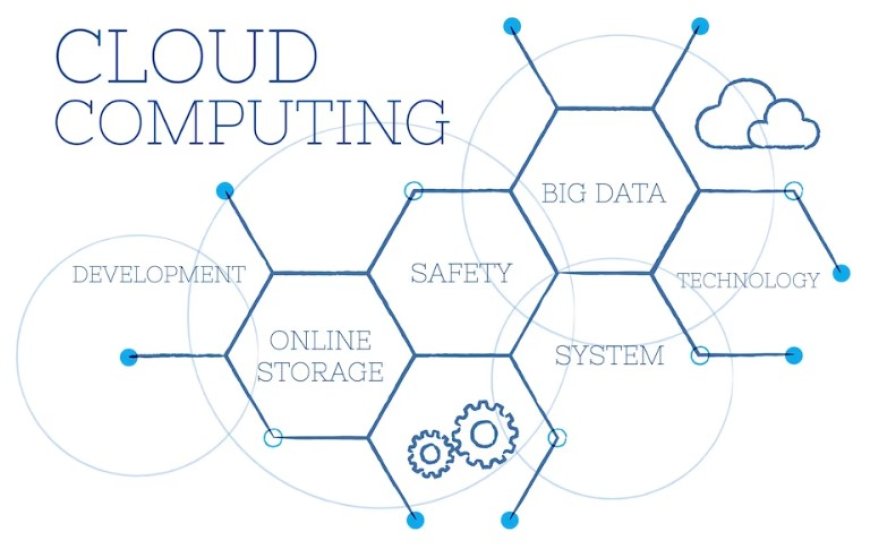Power of Cloud Computing: Exploring the Fundamentals
Unleashing the Potential: Exploring the Fundamentals of Cloud Computing

In today's digital era, cloud computing has emerged as a game-changer, revolutionizing the way businesses and individuals store, process, and access data. The cloud offers unprecedented scalability, flexibility, and cost-efficiency, making it a vital component of modern technology infrastructure. In this blog, we will delve into the fundamentals of cloud computing, demystify its key concepts, and explore its numerous benefits and applications. So, let's embark on this exciting journey into the world of cloud computing!
What is Cloud Computing?
When it comes to cloud computing, there are different service models available: Infrastructure as a Service (IaaS), Platform as a Service (PaaS), and Software as a Service (SaaS). These models offer varying levels of control and management, allowing you to choose the most suitable option based on your requirements. IaaS provides virtualized computing resources such as servers, storage, and networking, giving you more control over the underlying infrastructure. PaaS offers a platform for developing, testing, and deploying applications without the need to manage the underlying infrastructure. SaaS, on the other hand, provides ready-to-use software applications accessible over the internet, eliminating the need for installation and maintenance.
Cloud Architecture and Deployment Models
At its core, cloud computing refers to the delivery of computing resources over the internet. Instead of relying on local servers and infrastructure, cloud services allow you to access and utilize computing power, storage, and applications remotely through the internet. This shift from traditional IT infrastructure to the cloud offers numerous advantages in terms of scalability, cost efficiency, accessibility, and security.
The traditional model of maintaining on-premises servers and infrastructure comes with limitations in terms of scalability and flexibility. However, with cloud computing, you have the freedom to scale your resources up or down based on your needs. Whether you're a small business or a large enterprise, cloud services provide the ability to adjust your computing capacity on demand, enabling you to optimize resource allocation and reduce costs.
Key Components of Cloud Computing
Virtualization is a fundamental concept in cloud computing that enables resource pooling and efficient utilization. It allows multiple virtual machines or containers to run on a single physical server, optimizing hardware resources and reducing costs. By abstracting the underlying hardware, virtualization enables flexibility and agility in managing and allocating computing resources.
Scalability and elasticity are key characteristics of cloud computing that allow businesses to meet changing demands with ease. Scalability refers to the ability to increase or decrease resources based on workload requirements. Elasticity goes a step further by automatically scaling resources up or down in real-time to match the current demand. This dynamic scaling capability ensures optimal resource utilization and cost-efficiency.
Benefits of Cloud Computing
Cost efficiency is a significant advantage of cloud computing as it reduces capital expenditure and operational costs. Instead of investing in expensive hardware and infrastructure, organizations can opt for pay-as-you-go models and scale resources based on their needs. This eliminates the need for upfront investments and allows businesses to allocate their budget more efficiently.
Agility and scalability are inherent in cloud computing, enabling organizations to rapidly innovate and grow. Cloud services offer the flexibility to quickly provision and deprovision resources, allowing businesses to scale up or down based on demand. This agility empowers companies to experiment, launch new products or services, and respond promptly to market changes, giving them a competitive edge.
Cloud Service Providers
When it comes to cloud computing, several leading cloud service providers offer a wide range of services and solutions to meet the diverse needs of businesses and individuals. Providers such as Amazon Web Services (AWS), Microsoft Azure, Google Cloud Platform (GCP), and IBM Cloud dominate the market with their robust infrastructure and comprehensive offerings. These providers offer various cloud service models, including infrastructure as a service (IaaS), platform as a service (PaaS), and software as a service (SaaS), catering to different levels of user requirements. Organizations must compare the features, scalability, security measures, pricing models, and customer support offered by these providers to choose the most suitable option. Factors like specific business requirements, budget, data privacy needs, and geographical reach should be considered when selecting a cloud service provider. By making an informed decision, businesses can leverage the power of the cloud, optimize costs, and drive innovation to achieve their goals.
Cloud Computing Use Cases
Cloud computing has revolutionized the way businesses operate by offering a plethora of enterprise applications, data analytics, IoT, and artificial intelligence (AI) capabilities. Enterprises can streamline their business processes and enhance collaboration through cloud-based enterprise applications, which provide seamless communication, project management, and resource allocation. The cloud also empowers organizations to leverage the vast amounts of data generated by their operations by utilizing data analytics and big data processing tools. Additionally, the integration of cloud computing and IoT enables the deployment of connected devices and smart systems, facilitating real-time data collection, analysis, and decision-making.
Security and Privacy in the Cloud
Cloud security is a critical consideration for organizations utilizing cloud computing. While the cloud offers numerous benefits, it also presents unique security challenges. Data encryption and access control mechanisms play a vital role in safeguarding sensitive information stored in the cloud. By encrypting data at rest and in transit, organizations can ensure that unauthorized individuals cannot access or manipulate the data. Additionally, implementing robust access control measures, such as multi-factor authentication and role-based access control, helps limit access to authorized personnel only. Compliance with regulations and industry standards is another essential aspect of cloud security. Organizations must adhere to relevant data protection regulations and industry-specific compliance requirements to maintain data privacy and mitigate risks.
Future Trends in Cloud Computing
Edge computing, serverless computing, and multi-cloud/hybrid cloud are emerging trends in the field of cloud computing. Edge computing brings processing capabilities closer to the source of data, reducing latency and enabling real-time decision-making. By leveraging edge devices, organizations can process and analyze data locally, enhancing efficiency and responsiveness. Serverless computing, on the other hand, allows developers to focus on writing code without the need to manage infrastructure. With serverless platforms, organizations can deploy and run applications in a scalable and cost-effective manner, paying only for the actual usage of resources.
By concluding, Cloud computing has revolutionized the way businesses and individuals access and utilize technology resources. By shifting from traditional IT infrastructure to the cloud, organizations can benefit from scalability, cost-efficiency, accessibility, and enhanced security. The core principles of cloud computing, such as virtualization, scalability, high availability, and data privacy, enable businesses to streamline operations, innovate rapidly, and ensure business continuity.



























































